1927
1927 September vol. 10, no. 1
First titled theme issue, Studies in the Late Antique Undertaken in the School of Classical Studies of the American Academy in Rome, 1925–1926, by special editor, CHARLES RUFUS MOREY, Professor-in-Charge of the American Academy in Rome, 1925–1926, introduced by his editorial note.
The studies in this issue advanced Morey’s interests in the origins and development of style in the Middle Ages. (See his article, The Sources of Medieval Style, in 1924, vol. 7, no. 2 (pdf) and the 1924 entry in the timeline).
Although he never held the position of Editor-in-Chief, Prof. Morey was deeply engaged in the work of The Art Bulletin, an active contributor and member of the Editorial Board.
In the early years after 1913 there were only a few historical articles. They were written by classical archaeologists, and some of the first editors of the Bulletin were scholars of this kind, notably David M. Robinson, who became editor-in-chief in 1919. Indeed scholarly investigtion of artifacts began in the United States as archaeology. It is perhaps not generally known that The American Journal of Archaeology was the true progenitor of The Art Bulletin. The ramification from archaeology is indicated by the title adopted by the AJA in 1886: The American Journal of Archaeology and of the History of the Fine Arts. During the following decade its editors, A. L. Frothingham, and Allan Marquand, both of Princeton, were publishing papers on Mediaeval and Renaissance art. In 1913 a younger generation, G. H. Edgell, F. J. Mather and C. R. Morey joined them. It was only from 1919 on that these art historians began to write in The Art Bulletin, along with classical archaeologists and other renegades from this field.MILLARD MEISS, The Art Bulletin at Fifty, 1964, vol. 46, no. 1, pp. 1–5, at pp. 2–3 (pdf).
This page is a tag of:
| Previous page on path | Firsts, page 8 of 19 | Next page on path |
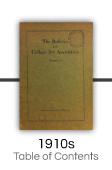




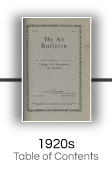





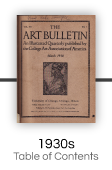



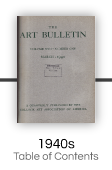








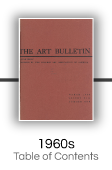




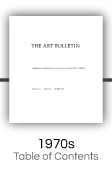


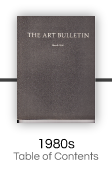








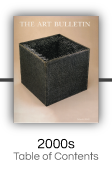




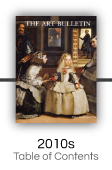


Discussion of "1927"
Add your voice to this discussion.
Checking your signed in status ...